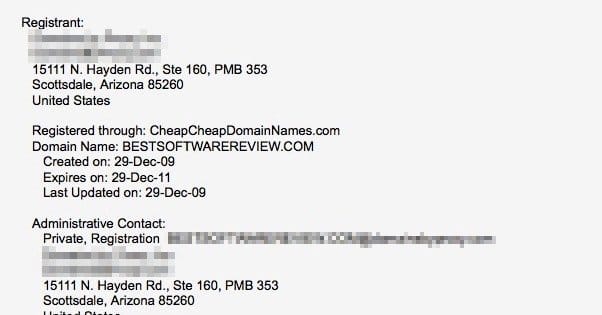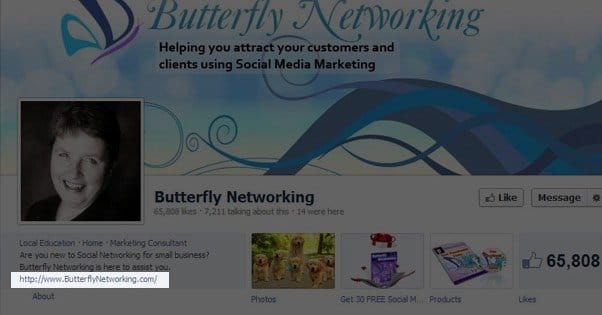 Written by ContentPowered.com
Written by ContentPowered.com
What if you’re a minor public figure with a fan club, and that fan club has an unofficial Facebook page? What if you log in one day and check it out, only to discover a factual error in their information? What if you like the page and would like to endorse it, so they don’t worry about getting unexpectedly shut down?
This is the sort of situation you might find yourself in where you want to contact the owner of a Facebook page. Other reasons might include wanting to get the owner to remove a post that you find offensive without taking it through the Facebook disputes route, or getting personal information removed when you don’t want it shared.
In any case, you want to contact the owner of the Facebook page, but there’s no easy way to do so. With a profile, you can just send a message and know it gets to the right place. With a page, there’s an additional layer of anonymity, typically to protect the account of the owner from hacking attempts. That’s not to say there’s no way to contact them, though.
Here are some options you can try.
1. Check the Page About Tab for Information
Page admins used have the ability to show or hide their association with a page. This functionality was removed at some point over the past couple years, but that doesn’t mean the About section is useless. Often times, businesses or pages of various sorts will attach some contact information to their Facebook page. For example, Moz’s Facebook page has both their website and a contact email in their description. You can shoot them an email or look for a more direct contact method via their site, if you so choose.
In some cases, the page will actually list the direct owner of the page in the about section. This makes it easy; look up the person on Facebook and send them a message. They might not answer you – your message might end up filtered to the side folder no one checks – but it’s the most direct means of contacting them you have.
2. Send the Page a Private Message
Pages are not the same as profiles, but that doesn’t mean they’re totally different. Every Facebook page has the ability for you to send it a direct message. Pages can only send you messages in response, though, so you can’t just post and ask them to send you a message. This is to prevent excess spam on the site; Facebook doesn’t want pages being able to send out direct message spam. That’s why there’s actually surprisingly little of such spam on Facebook.
Now, whether or not your message is received or read is another story. There’s no way to tell if the page admin checks frequently, or if they have notifications for messages turned off. There’s also no way to check to see if your message has been read. If it’s read, there’s no way to know whether or not the admin has deleted it until such time as they respond.
Remember, again, a message might end up filtered to the side folder rather than the main messages folder. Currently, Facebook calls it the “message requests” folder, but it’s been known to change names occasionally. If you’re waiting for a response, be sure to check there.
3. Look for Someone Who Owns the Business
This one involves doing a little legwork, and it assumes that your target Facebook page is representing an organization or business that has a larger web presence. You’re not going to find anything for an unofficial fan page run entirely on Facebook, or a Facebook-exclusive entity that doesn’t have a website or anything of the sort.
The first thing I would look for is any other social media links on the Facebook page. Twitter is one of the best. Check for a Twitter and see if you can message the owner through it instead of through Facebook. Twitter is a better direct messaging platform anyways, so it’s a good idea to try.
LinkedIn is also good, though most businesses won’t list their LinkedIn on Facebook because it’s not a very beneficial link to include. They’re two very different social networks with two very different purposes.
If they have a website, you can visit that website and read their about page. Chances are they’ll give some kind of information about the owner or fonder of the business. You can then take that information – ideally a name and a profile picture – back to Facebook. Plug in the name and look for someone who fits the description. You can also perform a Whois on their website to see if their contact information is listed publically.
If you’re lucky and the owner subscribes to SEO practices, they probably have their business name tagged as a place they work. This will be a link between the user and the Facebook page, and will allow you to message the user directly rather than messaging them through their Facebook page.
Otherwise, you can just send a message through whatever contact methods show up on the site. Filling out a contact form or calling an office is more likely to get you a sales department than the social media folks, but they can probably refer you if you have a valid problem.
Unfortunately, none of this works for pages that don’t have a legitimate brand or business presence. Pages that are impersonating someone, pages that are aggregating viral content, pages that were made around bullying, pages based on social issues; these pages don’t have websites and they aren’t trying to build a brand. The admin is more likely to be trying to hide than they are to publish themselves. You’re not going to have a good time trying to contact that sort of page.
4. Post Publicly to Ask for Contact Information
Sometimes a page doesn’t have any associated means of contact and doesn’t have a website, but also isn’t intentionally trying to hide. It may be managed by a team of people sharing an account, or by people who don’t see the value in building a brand.
In these cases, you may be able to get contact information just by posting publicly to the wall of the page in question. Post asking that the admin contact you, or post your email address – or a disposable one if you don’t want the page users to spam you – asking that they send you a message. Sometimes they’ll be more than willing to do so, or at the very least they will be willing to give you some means of contacting them.
5. Look for an Associated Website and Contact Them
This is taking the same sort of website research from above and kicking it another notch out. Sometimes you won’t be able to find a website, but you might be able to find a site that has ties to or an association with the Facebook page in question. This often happens with charities, for example; pages where there is an overall governing body that manages the project, but perhaps does not control the project directly.
At this point we’re really grasping at straws, though. There are a couple more options you can take, but they’re getting increasingly less likely to be viable.
6. Stalk Website Code
If you found the website that has sharing buttons that associate with the page you’re trying to contact, but that website does not have contact information or has otherwise ignored your communications, you can look into the code of the site. Most of these sites will have OG information, which is meta data about Facebook’s open graph attributes. These attributes are what specifies how a post shows upon Facebook when it’s linked, among other things.
What you’re looking for is an ID that associates with the page owner. If you’re lucky, the website is still using old graph data and hasn’t updated to the newer, more obscure versions of the code. If you find an ID, you can plug it in at the end of the www.facebook.com/IDnumberhere URL. This will take you to the page owner’s profile, if you’re lucky.
7. Resolve Your Issue Elsewhere
When all else fails, you tried. You really put forth the effort. It’s time to bring out the big guns. What is the issue you had to resolve? Chances are, you can get it resolved by going through Facebook.
- If the page exists and is representing you or your brand, and you want to take ownership of it, it’s possible that this has all been a wild goose chase. Some older pages simply never had admins in the first place. You can follow these steps to get control of the page handed over to you, or at the very least get it shut down for impersonating you.
- If the page is posting content that you don’t like, you can block the page. Facebook isn’t going to remove content that doesn’t violate their terms just because it displeases you, but that doesn’t mean you need to keep it around. You can block the page, which hurts the EdgeRank of that page as a whole, and will make it that much harder for them to accomplish growth.
- If the page is posting content that violates the Facebook terms of service in some way, you can report the page and the posts individually. This will send reports to Facebook, where they can look them over and remove offending posts. If the posts are removed and more reports come in, it’s possible that Facebook will ban the account entirely.
- If you needed support for something the page manages, you’re out of luck through Facebook official channels. Due to privacy laws, they won’t hand over information about the page owners without having something like a police warrant in hand. It’s only when a crime has been committed that Facebook is liable to hand over any information at all.
Finally, of course, you can always take your business elsewhere. If you were looking for support for a program or product, you can find user forums on sites like Reddit or various industry fansites. These are locations where other fans get together to support each other, and you can probably find help there. You can also visit third party sites, retailers or resellers, who might be able to help you.
If you were looking to buy a product, chances are you’re rethinking it about now. If you’re having this hard of a time contacting anyone associated with the business and page, you’re not going to want to invest in them, are you? Sure, maybe they pay more attention to paying customers. Then again, maybe they don’t. Is that a risk you’re willing to take?
Outdated Methods
There was one significant method many people used to track down the admin of a page, and it exploited a loophole in the way Facebook’s mobile messenger was coded. The process worked like this:
- Go to your “other messages” folder. This is the side folder I keep talking about, back before it was named “message requests.”
- Look for a message update from the page you’re looking for.
- Open the page update and replace the URL www with m. This transitions you to the mobile site.
- There will be a profile link in the subject line of the update, which includes the ID of the admin of that page.
In 2013, the process was changed. When opening the update, you would need to use a tool like Firebug to view the code of the site. The text of the message – right click, inspect element – would have a DIV identifier. There would be an author:ID code, where that ID is the Facebook page admin’s ID.
Unfortunately, that trick stopped working as well, and even then, it only worked if you had an older message. Newer messages don’t carry that data, and in fact you aren’t going to be getting page updates as messages regardless.
You can still try looking through code for author or owner IDs, but you’re probably not going to find anything. You’re limited to the options I outlined above.




I am having trouble getting on facebook from my computer. A message keeps popping up saying..”Can’t connect securely to this page. This might be because the site uses outdated or unsafe TLS security settings, trying contacting the website’s owner.” How can I fix this..or can someone there help me to fix this. Thank you for your time.
Hi Romola, try clearing your cookies/cache and disabling any browser plugins. Some browser plugins can break HTTPS/SSL on websites. Also try in another browser to rule out that browser. This isn’t exactly related to contacting an owner on Facebook but I hope I could help anyway!